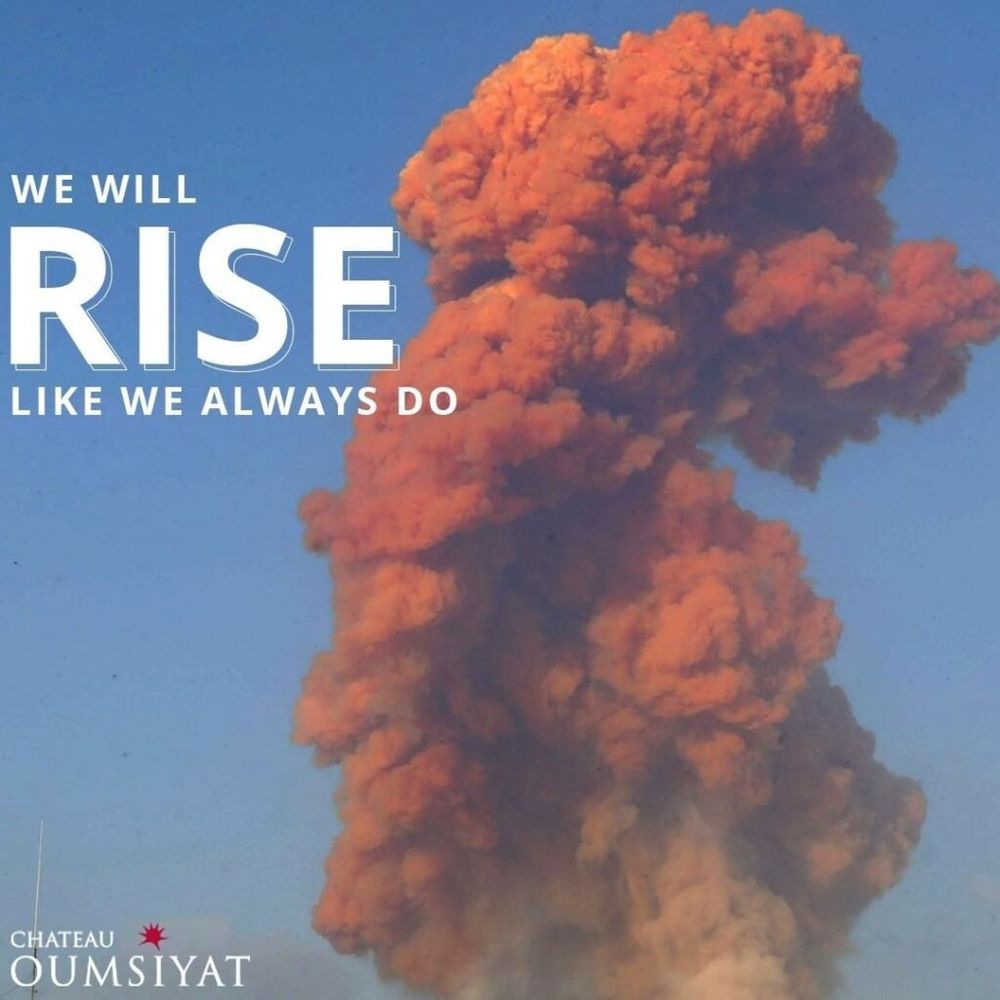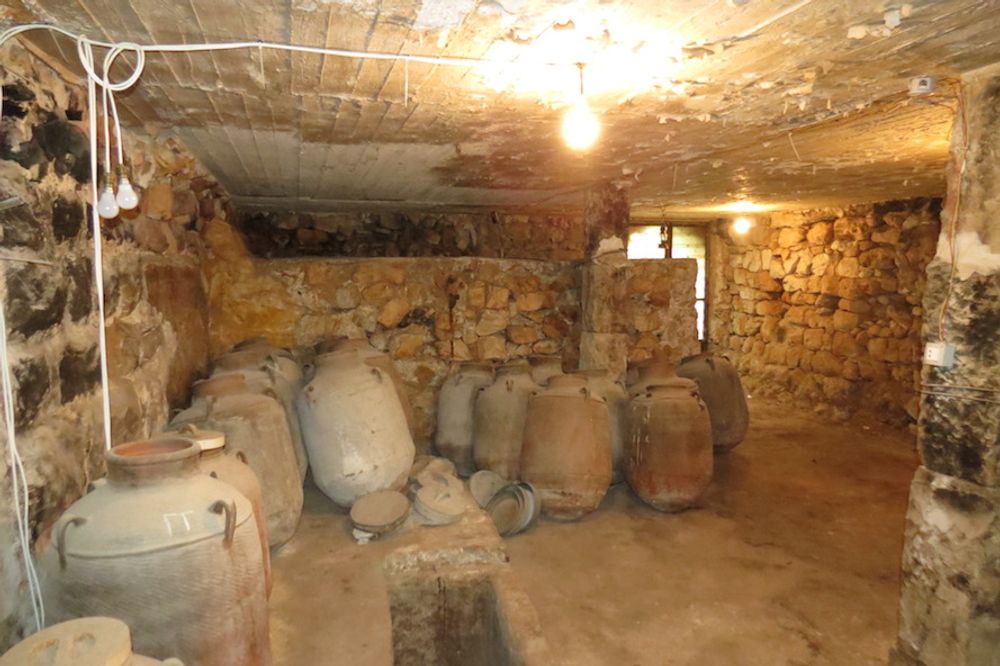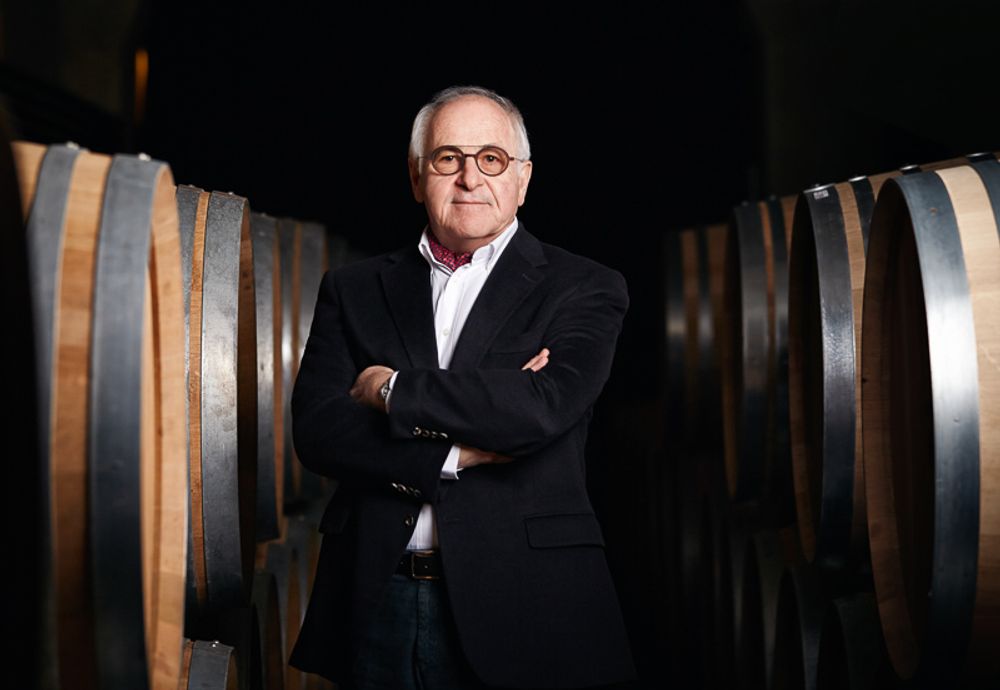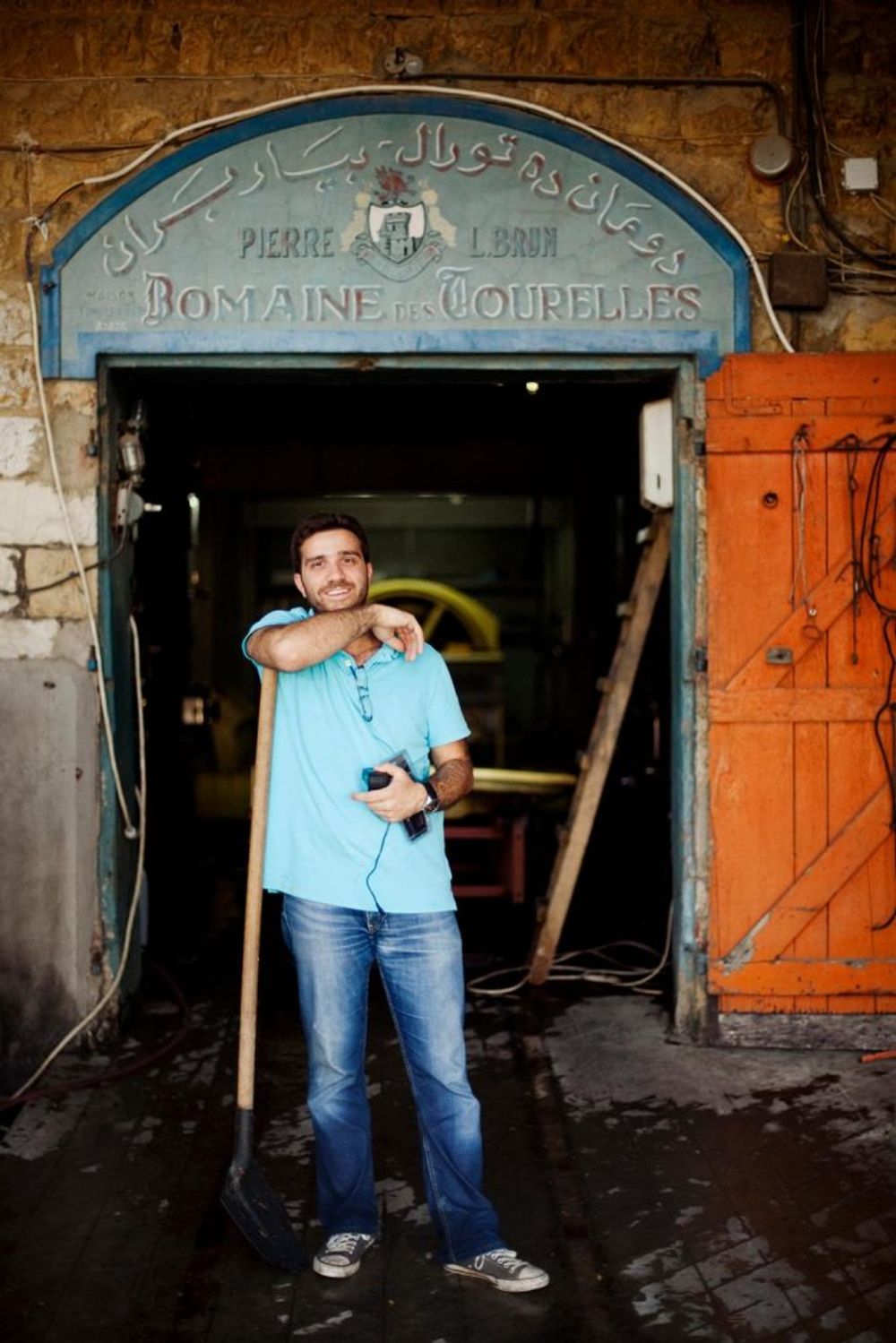“We need to work hard to get the message across, to make people truly aware of what we have here,” says IXSIR co-founder Etienne Debanne.
This has been a catastrophic year for Lebanon. Decades of mismanagement by corrupt, factionalised political parties culminated in the collapse of the national economy and currency and also of Lebanon’s banking system, once the pride of the Middle East. The explosion at Beirut port on August 4 left over 200 dead and devastated the city, leaving 300,000 homeless and a reconstruction bill of at least $20bn. Meanwhile returning Prime Minister Saad Hariri’s efforts to rebuild are being frustrated by Covid-19 – there is understandable public anger.

Chateau Oumsiyat Instagram post, August 5, 2020
All this has had a dramatic impact on Lebanon’s wine industry – one of the few viable businesses remaining inside this shattered country, with wineries now numbering 50-60 following two decades of growth (although just ten account for 90% of production).
Producers here are hardly strangers to hard times, with the likes of Chateau Musar, Chateau Ksara and Domaine des Tourelles harvesting grapes and making wine throughout the 1975-90 civil war in a region – the Bekaa valley – that remains home to Hizbollah.
But the financial squeeze brought about by Lebanon’s economic collapse is of an altogether different order.
Since ancient Phoenicia, wine has been made here for millennia, but the modern industry only dates back to when Lebanon (and neighbouring Syria) was under French control and winemaking was encouraged, most notably by the Church and the Jesuits. Wine remains in many senses a foreign (French) construct, reflected in the grapes planted – predominantly Rhône and latterly Bordeaux varietals although native ones are becoming more widespread – and significantly, in the fact that the industry remains dependent on imports for just about everything, including bottles, closures and equipment.
With the Lebanese pound now worth around 10-20% of its value against this time last year, and inflation nearing 150%, the cost of these has risen exponentially, whilst dollar earnings are a fraction of what they were: the average local dollar value of a sold bottle has dropped from around $20 to $2, whilst local demand has also been impacted by the collapse in living standards, Covid-19 and the evaporation of Beirut’s famous night-time culture.

Chateau Oumsiyat: “We are bringing back varieties that the Phoenicians planted in the islands they discovered.”
The international efforts to help Lebanon
The UK trade, which has had a soft spot for Lebanese wines ever since Serge Hochar started selling Chateau Musar here at the end of the 1970s, has been helping. In the wake of the Beirut port explosion, the Wine Society put together a special Lebanon case (including the excellent just released Chateau Musar 2013 and the moreish Le Colombier 2018 by Massaya) to sell at cost.
“The Wine Society has a long history with Lebanon, first listing a wine from the Bekaa in the 1960s, but we were overwhelmed. The mixed case sold out in 15 minutes. We managed to source more stock and one week later, total sales were equivalent to what we would sell in a whole year. This is incredible,” says Director of Wine, Pierre Mansour.
Others have also been active. In late August wine PR consultant Madeleine Waters organised an online auction Bid for Beirut with people and companies in the UK trade donating bottles: over £20,000 was raised for two local initiatives to help people affected by the crisis.
Meanwhile Aldi UK has launched Bekaa, a Chateau Ksara red, whilst Majestic is having great success with a range of Domaine des Tourelles wines.

Etienne Debbane, co-founder IXSIR
Individual efforts
But producers are aware that if they are to survive these difficult times, their own efforts are key.
Last month IXSIR, one of Lebanon’s newer wineries (first vintage was 2008, and controversial former Nissan-Renault head Carlos Ghosn is amongst its key shareholders) held Zoom tastings with the UK trade.
Although now producing around 500,000 bottles a year from its award-winning underground winery in Batroun, near Byblos in north Lebanon (most wineries are further south in the Bekaa Valley) only 6000 are imported to the UK, although 40% of production is exported to other markets.
Co-founder Etienne Debanne says the UK is a promising market right now, and showed off the range to illustrate his point. These are beautifully made premium wines and very distinctive, because IXSIR takes its grapes from growers in six different mountain vineyards of which one, at 1800 metres, is reputedly the highest vineyard in the Northern Hemisphere. This is one of Lebanon’s sunniest areas, enjoying up to 300 days of sunshine a year. Height and light therefore, in an area where wine was first made around 5000 years ago, with former vineyards grubbed up by the Ottomans now being replanted.
“We produce wines in a modern way but on very old terroirs. We want to make a new expression of Lebanon, using familiar varieties (14 altogether) in unfamiliar terroirs,” he says.

Faouzi Issa at Domaine des Tourelles
An hour and a half south, maverick winemaker Faouzi Izza at the historic Domaine des Tourelles – founded as Lebanon’s first commercial winery by French adventurer Francois-Eugene Brun in 1868 – is similarly eager to see more of his wine here, especially the old vine wines that are the winery’s standard-bearers.
“Our survival strategy is simple: export! It’s vital as it brings ‘fresh dollars’ which we can access to pay suppliers abroad. We hope to see growth come from existing markets but also new ones,” he says.
Like IXSIR, he believes his wines offer something unique.
“Minimal intervention and indigenous yeasts produces wines true to their terroir. Our winery is a living museum. I still use the concrete tanks installed 150 years ago, and with grapes also planted then, we’ve gone back to the roots of winemaking. Our old vine Cinsault and Carignan have really captured imaginations,” he says, suggesting new additions will join the range next year.

Château-Oumsiyat’s Joseph Bou Sleiman and family, showing off the Most Beautiful Vineyard commendation
Chateau Oumsiyat lies just 40 minutes away but is a very different proposition to either Domaine des Tourelles or IXSIR. Founded in 1950 and family-owned, it focuses on modern, accessible but nuanced wines, fruit driven but without oak, with the distinct influence of the Mediterranean but also the terroir and high altitude climates of Bekaa Valley and Mount Lebanon. Although Oumsiyat makes a hefty Syrah from 1800 metres on Mount Lebanon, it is the white wines that are striking, not necessarily what first comes to mind with Lebanese wine.
“We are bringing back varieties that the Phoenicians planted in the islands they discovered, like Assyrtico from Santorini. We are also producing wine from indigenous white varieties such as Obeidy,” says Joseph Bou Sleiman, owner and winemaker. He plans wines made with two more local white varieties Merwah and Meksassi.
Going forward he reckons the outlook for Lebanon’s wine industry is good, with the appeal of the wine boosted by the growing popularity of eastern Mediterranean cuisine, with the off-trade likely to grow in importance.
“The resilience of the wine industry here truly is something to be admired,” he says.
IXSIR’s Debanne echoes this, adding though that however good his and other Lebanese wines are, they won’t just fly off the shelves.
“We need to work hard to get the message across, to make people truly aware of what we have here,” he says.
Tasting wines of the Lebanon
November’s Zoom tasting did a great job boosting awareness of a Lebanese producer with a low profile here. We tasted the entry level Altitudes White 2019 (Obeidy, Muscat and Viognier) and Altitudes Red 2016 (Cabernet Sauvignon, Caladoc, Syrah and Tempranillo) before moving onto the rich, rounded and nuanced Grand Reserve White 2019 (Viognier, Sauvignon and Chardonnay) and the warm fruit-driven Grand Reserve Red 2013 (Syrah and Cabernet Sauvignon) and ending with the flagship EL IXSIR 2014, named after the Phonecian god of wine and comprising 50% Syrah, 40% Cabernet Sauvignon and 10% Merlot, weighty and impressive but frankly too young right now.
I loved the Grand Reserve wines for their perfect balance: each of the components of the blend really contributed to the whole. Head winemaker Gabriel Rivero (also on the Zoom call) has done a sterling job here. But for me the Altitudes range are core to IXSIR’s appeal: for wines priced here at around £19, they over-deliver on taste and quality, and confirm this relatively new producer has great things ahead of it. (wines available from Enotria & Coe)
The old vine wines dominate here, especially since the launch this year of the meaty Vielles Vignes Carignan 2018, a delicious, brambly muscular counterpart to the Vielles Vignes Cinsault 2018, a slightly lighter, red cherry and marzipan-toned wine. Both are frankly, cheap for what they are. But all their wines are worth a look, especially the reds: the entry level Cuvee Brun 2018 is meaty but balanced and great value for under £12 whilst the premium Syrah 2014 oak-aged for 24 months is wonderful, full on raspberries and cherries with a great peppery spice finish. (Boutinot)
Chateau Oumsiyat (HN Wines)
Unoaked, modern-style whites grab the attention here with the yellow, peach-hued Obeidy 2018 a great, fresh take on Lebanon’s best known local variety; a spicy salinity supports the acidity, making this a great meal accompaniment.
Oumsiyat’s Assyrtiko is as far as I know only the second non-Greek example of the variety and this Cuvee Membilarus 2018, with grapes grown and hand-picked at the Chateau’s 1000 metre high vineyard near Mt Lebanon, is a great tangy, floral and citrus-driven wine, very Mediterranean in character.
Oumsiyat’s reds are intriguing, notably the full on Syrah 2018: concentrated dark berry fruit and warm fine tannins make this a great winter food wine. The Grand Reserve 2018, whilst maybe needing a little more time in bottle to develop more fully, is a well-integrated, spicy, fruit-driven blend of 50% Merlot, 30% Cabernet Sauvignon and 20% Syrah. And, for a delicate, floral aperitif wine, look no further than the pink Syrah-based Soupir 2019, its wild berry fruit flavours held in perfect check by bracing acidity.









































